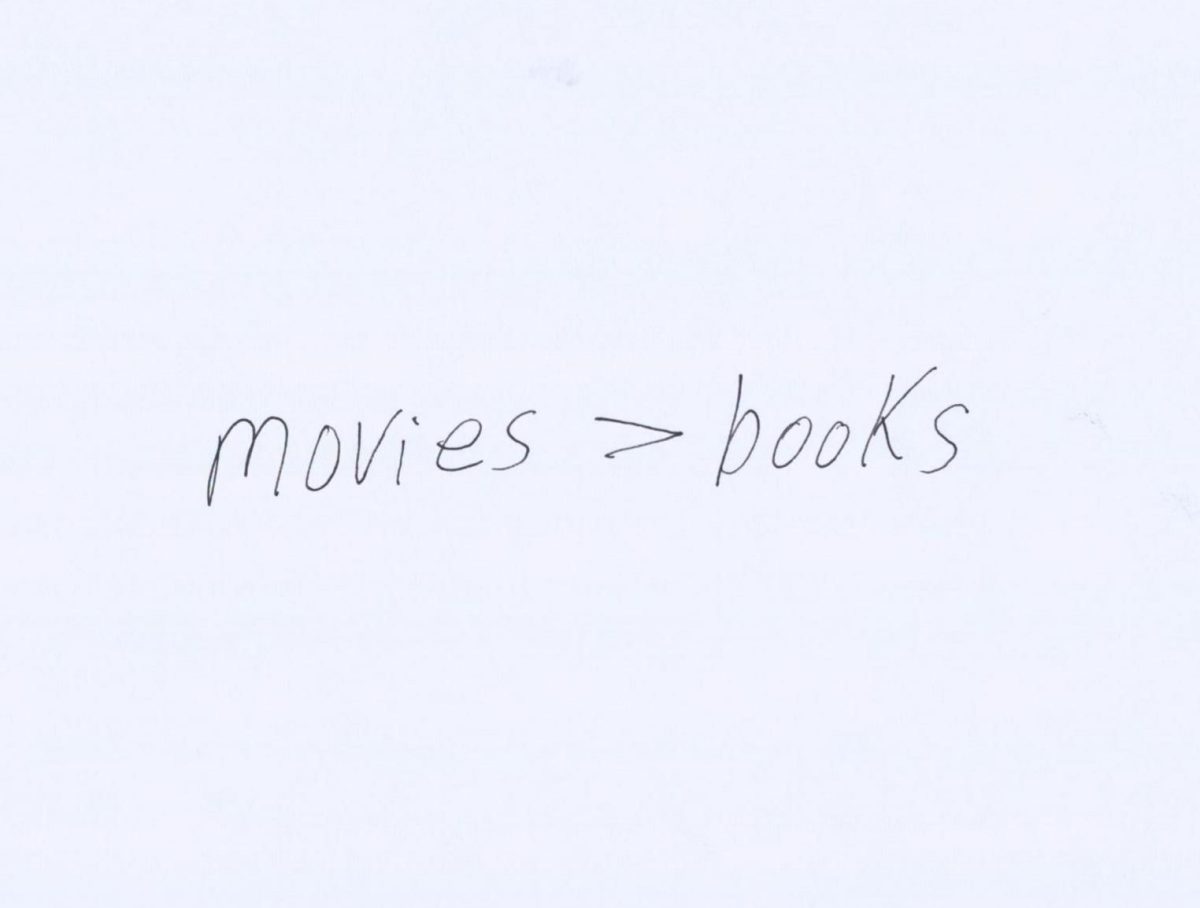Bang.
As an audience member, when you read the word bang, what emotions does that evoke? Can you hear the sound? Now, imagine you are watching a horror movie—think “Halloween” or “It”—and you audibly hear a bang, coupled with visual, dramatic storytelling elements. Which medium is more likely to produce a physical reaction?
As you read a book, no matter how vivid your imagination is, the word bang written in the context of a horror novella pales in comparison to the audible bang that movies can provide viewers. This is not to say that books cannot be scary; rather, this difference highlights the point that movies make words on the page—even dreams—a reality.
I do not disagree with Opinion Editor Bella Congelio’s assertion that books are vital storytelling devices. Our thoughts on the matter diverge upon the pivotal point of which method is the better way to convey a story to an audience. Books have the incredible power of allowing audience members to partake in moments of empathy by entering their point of view and living within the confines of that character or setting.
Not to diminish the power of the written word but something about seeing human emotion conveyed on screen by another physical human feels more urgent. Cinematic techniques such as editing, shot composition, production design, props and sound mixing fully immerse viewers in the world of a story. A great movie can make audiences forget they are in a theater or at home. For two hours, a great movie can completely transform their perception of reality.
No matter how creative of a person you are, human imagination cannot conjure up any melody near the memorizing cadence of Miles Teller playing “Caravan” at the end of “Whiplash.” The imagination can try to fathom the conditions of Dunkirk in the novel “Atonement” but the filmed adaptation’s five minute tracking shot more effectively establishes the scope of that momentous day in world history than that of the best prose author.
Yes, a film’s foundation is cultivated in its written form—the screenplay. Most methods of storytelling have their origin in the written word whether it be plays, podcasts or films. However, the purpose of this “Head-to-Head” is to argue for the best mode of storytelling in its final form. The act of filmmaking is communal and the best results can only occur after the tremendous hard work of actors, grips, cameramen, designers, makeup artists and so many more talented artisans in pre and post-production.
The esteemed screenplay writer William Goldman, who wrote “Butch Cassidy and the Sundance Kid,” “All the President’s Men” and “The Princess Bride,” said it best in his book, “Adventures in the Screen Trade: A Personal View of Hollywood and Screenwriting.” Goldman wrote, “No matter how diamond-bright your ideas are dancing in your brain, on paper they are earthbound.” Cinema makes stories come to life in a way no novel ever could.



